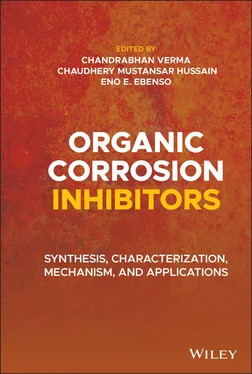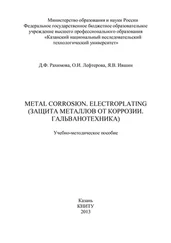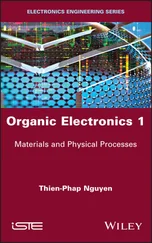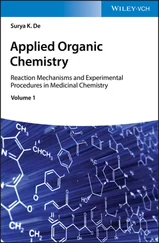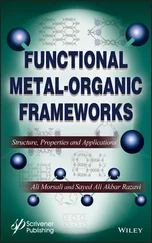2 Health Services Vocational School, Department of Pharmacy, Sivas Cumhuriyet University, Sivas, Turkey
Corrosion is one of the important challenges in the contemporary world, especially, after the introduction of technology into our lives following the industrial revolution, though it has been known and some techniques used to prevent it since the ancient Greek period. Furthermore, following the rapid development of informatics, aviation, and aerospace technology for the last 70 years, it is very important to design the materials used according to suitable environmental conditions, as well as to protect the materials used and to extend their durability periods. In the civilizing world, it is not enough to determine the most effective method, condition, or anticorrosion materials in order to prevent or delay corrosion, but also it is getting important that they are less harmful to the environment, with lower toxicity, and can be obtained from renewable resources, instead of existing natural resources. In this context, organic corrosion inhibitor material design has been very promising in many production areas besides the classical inorganic corrosion inhibitors.
Metal corrosion is known as metal erosion because of chemical or mostly electrochemical reactions when a metal comes into contact with surrounding materials. It is also known that the natural corrosion process is generally an electrochemical phenomenon and in this type of corrosion, it is known that the oxidation process is facilitated by the presence of an electron acceptor known as a suitable depolarizer according to the equation M → M n++ ne −. In addition, although there are many types of metal corrosion and classification of them [1], the main types of metal corrosion [2] can be given as follows:
1 Uniform (general) corrosion
2 Galvanic (two‐metal) corrosion
3 Thermogalvanic corrosion
4 Crevice corrosion (including deposit corrosion)
5 Pitting corrosion
6 Selective attack, selective leaching (de‐alloying)
7 Intergranular corrosion (including exfoliation)
8 Erosion corrosion
9 Cavitation corrosion
10 Fretting corrosion
11 Stress corrosion cracking
12 Corrosion fatigue
In the contemporary world, considering the environmental and economic damages caused by corrosion, it is very important to determine the source of corrosion and to take measures to prevent or at least slow it down: the main ways to slow down and/or preventing corrosion can be summarized as follows.
1 Metal type
2 Protective coating
3 Environmental measures
4 Sacrificial coatings
5 Corrosion inhibitors
6 Design modification
Among these protecting ways, the material selection and design is the simplest way to control the corrosion but in cases where there are not always many options for material selection and micro design, different methods are known to be applied to prevent or slow down corrosion. However, in the liquid phase and atmosphere, the corrosion inhibitors can be often enforced to improve the heat‐exchange efficiencies to reduce the corrosion. In this case, the electrochemical methods – anodic, cathodic, or both – have provide a wide profit in terms of the economics and saving the natural sources [3]. Material scientists have commonly exploring the usefulness of the alloys in addition to heat treatment regimes and protective coatings to reduce or prevent the corrosion [3].
Besides, the surface treatments, which are reactive, applied, and biofilm coatings in addition to the anodization, are used to slow down and protect the corrosion. For instance, the use of painting or enamel protects the material from corrosion by creating a corrosion‐resistant barrier between the damaging environment and the structural material. In this case, the use of chemicals that form an electrically insulating or chemically impervious coating on exposed metal surfaces to suppress electrochemical reactions make the system less susceptible to scrapes or imperfections in the coating because extra inhibitors can be present wherever the metal is exposed. Nowadays, organic and inorganic corrosion inhibitors, whether natural or artificial, are increasingly important. Because of the great importance of them, in this section, the organic and inorganic corrosion inhibitors are presented considering the molecular structures, main characteristics, and environmental effects.
Corrosion inhibitors are known to be used in countless fields of both production and commercial areas such as pipelines, cooling systems, refinery units, water treatment, painting, oil refinery units, and so on [4]. A basic classification of corrosion inhibitors is given in Figure 4.1.
4.2.1 Organic Corrosion Inhibitors
Organic corrosion inhibitors reduce and protect metal or alloy metal dissolution in aggressive environment by forming a thin film layer with adsorption process on the target surface. The adsorption of the compounds on the target surface can be physical, chemical, or both ways based on the type and properties of both the organic compound and target surface in addition to the environmental conditions of the corrosion happened in [5, 6]. The kinetic and/or thermodynamic searches on adsorption mechanism of the corrosion inhibition of the organic compounds have showed that the performance of the corrosion inhibitor have been mostly related to the surface coverage of the compounds depending on the structural properties [7]. It is also well known that heterocyclic compounds containing N, S, O, and P atoms, as well as compounds containing π ‐bonds and/or polar group that will allow electron delocalization, they provide protection of metals or alloys from corrosion. In the literature, it has been reported in the experimental studies that heterocyclic compounds such as azoles, indoles, and aromatic rings, as well as open‐chain organic‐based compounds such as epoxy and polymeric systems [8–10] can be successfully used against metal and/or alloy corrosion. In this context, it is important to address the major groups of organic compounds that provide corrosion protection and/or retarding properties.

Figure 4.1 A basic classification of the corrosion inhibitors.
Azoles are a class of five‐membered aromatic heterocyclic compounds containing at least one nitrogen atom and have an aromatic structure. They are named according to the number of nitrogen atoms in the aromatic ring and their position. In addition, there are other heteroatom‐containing azo compounds [11–13] such as O and S in their structure, and the main structures are shown in the Figure 4.2. The aromatic structures of azo compounds and the heteroatoms they contain cause an increase in polarity of these compounds due to electron delocalization in compounds, which make these compounds very useful materials for inhibition of corrosion. Srivastava et al. [14] have recently reported the efficiency of a benzo[d]imidazole derivative green corrosion inhibitor has a very good inhibition capability (>98%) on the carbon steel at optimum dosage conditions and continued the strong inhibition adsorption (>95%) even at 333 K. The inhibition ability of pyridine thiazole compound on copper corrosion in acidic medium has been investigated by a series of experiments techniques (EIS, SEM, AFM), and shown by the EIS technique that the maximum inhibition capacity is reached at 94% at 1 mM concentration [15]. Recently, the inhibition capabilities of a series of imidazole derivatives on the corrosion of mild steel in acidic conditions have been investigated by electrochemical, thermodynamic, and also computational techniques; one of the most important results of this investigation is that the imidazole derivatives provide the anodic protection of mild steel and promote cathodic hydrogen reactions as well [16]. Besides, phenanthroimidazole derivatives [17] and bis‐benzothiazoles derivatives [18] have a very high inhibitory potency for mild steel and showed a mixed type inhibitor capacity by TAFEL diagrams, but the priority for the cathode.
Читать дальше
